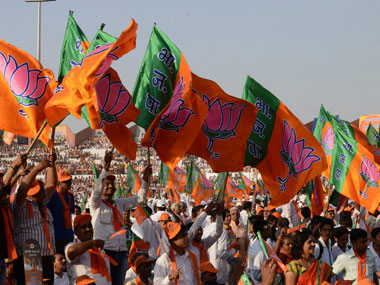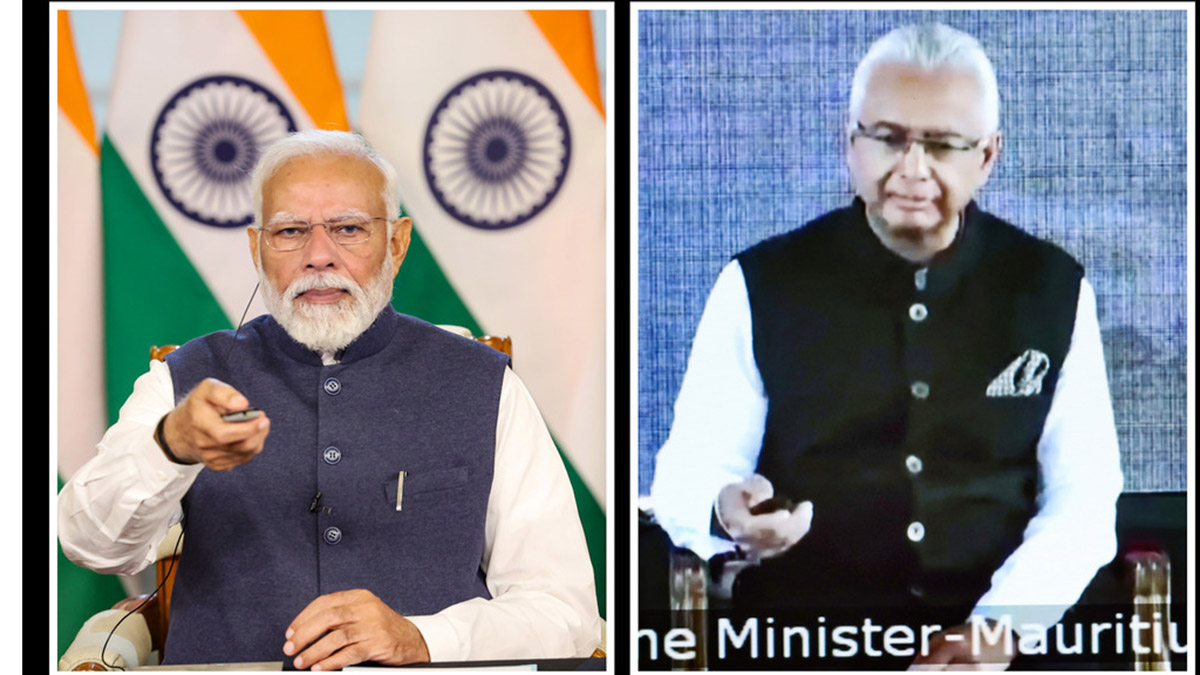The Sangh Parivar and the BJP have mostly been influenced by the Savarna Brahminvaadi culture. The upper castes and urban-business classes following the traditional Brahmanical culture have been their vote banks for a long time. The democratic politics has, nevertheless, compelled the Sangh and the BJP to associate themselves with the backward and Dalit castes.
It is interesting to note that the backward castes have imbibed the Brahmanical traditions too in their social and cultural structure. As a result of this, they are having no trouble in associating with the BJP. The OBCs now feature in the priority list for the Sangha in their Hindutva politics.
Though the Dalit groups are now willing to associate themselves with the Sangh family and the BJP, they are facing various internal conflicts due to their everyday needs, non-Brahmanical culture and non-Brahmanical social makeup. Their food habits, living conditions and culture – which negate the Brahmanical structure – are creating problems a plenty for the BJP-Sangh combine.
BJP’s victory in the 2017 UP Assembly elections and success in Mission 2019 – victory in the 2019 General elections – will depend upon them amassing 16.6 percent votes of the total population of the country. This has left BJP with no other option but to garner as many Dalit votes as possible.
Though the BJP is making every effort to win over Dalits, their progress is akin to accumulating sand in one’s fist. On one hand, BJP is making strong efforts in this direction, while on the other, various incidents enraging the Dalits are taking place on a regular basis. These are increasing mistrust, fear and disappointment in the minds of the Dalit groups towards BJP.
For instance, incidents like the suicide of Hyderabad University scholar Rohith Vemula; the barbaric assault on Dalits for removing the hide of a dead cow in Una in Gujarat; the disrespectful words spoken against Mayawati by the then BJP UP vice-president Dayashankar Singh; all are enough to widen the gap between the Dalits and the BJP.
The inclusion of Ambedkar as a symbol in BJP politics is also one of BJP’s strategies to win over Dalit votes. Ambedkar’s house in London was recently converted into a memorial by the Modi-led government.
Recently, in the representative meeting of the RSS held in Nagpur, a large statue of Ambedkar was placed on the dais and the mandap, that was prepared for the occasion, was also named after him.
BJP is vehemently following these strategies to appease Dalits. Many changes have also been made to the social harmony campaign mobilised by the Sangh family and BJP since the nineties. This campaign is now not confined to only visiting Dalit hamlets and having samrasta bhoj with them. New elements have also been added to it.
Other initiatives taken by the BJP as a part of its campaign are: taking Dalits on pilgrimage to holy places, having a holy dip with them, initiating the entry of Dalits into temples etc. BJP President Amit Shah, adding to these efforts, took a holy dip in Narmada River with Dalit saints in the Sinhasta Kumbha, held in Ujjain recently.
A new programme, called the Vichaar Kumbha, is now also a part of the social harmony campaign. This programme provides a chance to Dalits and the common people to have a dialogue with the reputed people in their villages and slums, wherein an appeal is made to them to walk forward in the direction of Hindutva politics.
In addition to these campaigns, the BJP is also organising VHP, RSS and BJP fairs where they reminisce about Dalit heroes, saints and leaders; print their booklets; establish their idols; construct temples in their memory etc.
In the last three months, the Sangh family has also organised Dhamma Yatras in various Dalit hamlets, slums and cities. The only aim behind these campaigns is Hindutva politics, and associating Dalits with the Sangh family and BJP. The BJP’s main motive behind this is to strengthen its roots within Dalit groups, and also to accrue electoral and political benefits in the forthcoming elections.
Despite these attempts, the BJP is still struggling to associate itself with Dalits as it is also encountering incidents that are making its Dalit campaigns completely futile. For example, amidst the various efforts undertaken by the BJP to associate Ambedkar’s memory within its political fold, there took place an incident in Mumbai, in which Babasaheb’s ancestral house was demolished. This caused a furore among a large section of Dalits in Maharashtra.
Vemula’s suicide gave birth to resentment among the educated and young Dalits towards the BJP leadership. These incidents led the famous Dalit singer from Aligarh, AR Akela, to say that Dalits are becoming more fearful under the BJP regime.
The Una district incident in Gujarat created sparks of anger in Uttarakhand, Uttar Pradesh and other parts of the country; the effigies of BJP leaders were burnt, and a mass disturbance followed in these places. The BSP cadres as well as the common Dalit people, are still fuming from the way BJP’s Dayashankar Singh insulted Mayawati. Not only are they looking at Dayashankar with disdain, but they have also developed a soft corner for Mayawati.
During our local study, we analysed that such awful wordings of the BJP leaders against Mayawati or BSP would only strengthen her politically . After the incident, the BJP took strict action against Dayashankar. But Mayawati, taking advantage of the situation, has now presented this incident in the form of a big political campaign.
The statement given by Sangh head Mohan Bhagwat on the issue of Aarakshan Ki Sameeksha, during the 2015 Bihar Assembly elections, proved to be politically beneficial for Lalu Prasad Yadav and Nitish Kumar. Mayawati also wants to accrue such political benefits. She wants to portray this not only as a blot on her reputation but also as a statement which attacks Dalit identity and Dalit self-esteem.
Mayawati, while preserving Dalit votes, does not want to lose Savarna votes either. That’s why she has planned to conduct Sarvajan Sukhaye Sarvajan Hitaye rallies at various mandals of UP.
Mayawati and BSP, in the last 30 years or so, have developed a counter culture amongst Dalits through the medium of their heroes such as Jhalkari Bai, Uda Devi and Bijli Pasi. They have intensified the self-esteem of Dalits through the medium of these Dalit icons. Therefore it seems that the issue of upholding Dalit self-esteem may work well politically in the forthcoming elections.
There is less than a year left for the UP elections. In the meantime, how much of the disappointment of Dalits towards the BJP will convert into political accretion for the BSP? How much harm will they do to the BJP-Dalit association campaigns?
Let’s wait and watch.


)




)
)
)
)
)
)
)
)